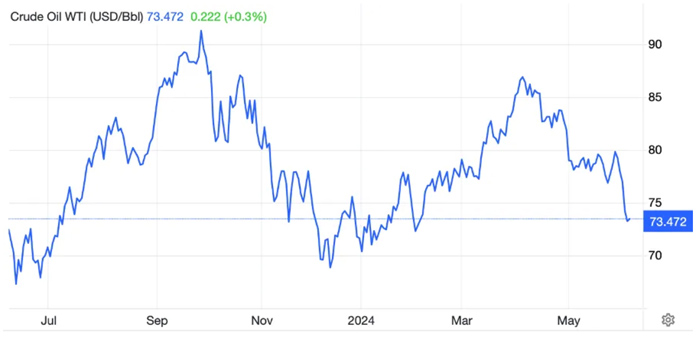A Keynesian Window for Gold Buyers
Alasdair Macleod
 A realisation that the US economy is sliding into recession persuades mainstream economists that prices, interest rates, and bond yields will fall after all. They ignore instability in the dollar A realisation that the US economy is sliding into recession persuades mainstream economists that prices, interest rates, and bond yields will fall after all. They ignore instability in the dollar
The quality of mainstream economic analysis is extremely poor, evidenced by its consistent failures. The latest evidence of this paucity is a growing realisation that the US economy is in recession, particularly as yesterday’s job opening numbers (JOLTS) hit the lowest level since February 2021. Wake up folks!
Anyone who understands that a GDP number driven by government deficit spending is not economic growth is either ignorant or being informed by personal bias. But it is thinking of this ultra-low quality which dominates financial markets today.
There’s little doubt that the fall in Treasury yields is down to this hopium:

And the fall in oil prices in thin volatile paper markets is driven by the same story:

Now that there is an awakening to recession, mainstream analysts seize the opportunity to talk rates down: “Citigroup says that the Fed will have to cut interest rates in July and at every meeting until mid-2025” (Ambrose Evans-Pritchard, today’s Daily Telegraph). And others are talking of reducing exposure to equities in favour of bonds.
The simple assumption is that a recession is a period of falling demand and unsold goods. This is half true in that there is falling demand. But the error is to assume that supply won’t decline as well. In fact, supply declines first, as foretold by the JOLTS number. A recession leads to a drop in employment first, and therefore total consumer spending second.
An even more significant error is to assume that for the purpose of economic forecasting the purchasing power of the currency remains constant. If the currency was bound to gold, this would be broadly true. But today’s currencies are valued and therefore their purchasing power is determined by faith in them purely as credit.
Among America’s foreign creditors, this faith is plainly waning, though the useful idiots in America’s financial mainstream simply don’t understand the danger this presents. While domestic users of the dollar are generally clueless, it is foreign holders who will set the dollar’s value, not so much against other currencies, but in terms of its purchasing power measured in commodities.
Furthermore, foreign interests have been relied upon to be not only buyers of dollars, but buyers of US debt as well. They increasingly see the US as being ensnared in a debt trap and have begun to back off from further involvement with the dollar and its federal debt. Inevitably, there is a funding crisis looming for the US Government, which will drive bond yields higher, not lower.
The advice to invest in bonds is badly misplaced. Citibank’s reported advice that the Fed will reduce interest rates effectively to the zero bound is irresponsible.
Without massive cuts in government spending (dream on!), the dollar and its global fiat currency regime is in the early stages of a titanic decline. That’s why gold and silver as the monetary representatives of the entire commodity complex appear to be rising. But in the kingdom of the blind…
The Chinese and other Asians are not taking chances and their demand for physical metal is bound to accelerate. Meanwhile, paper gold in the west is on pause, but for how long only time will reveal. Doubtless, anyone who doesn’t take the opportunity to escape from the collapsing mountains of increasingly dodgy credit by buying gold at any price will end up kicking himself.

Alasdair became a stockbroker in 1970 and a Member of the London Stock Exchange in 1974. His experience encompasses equity and bond markets, fund management, corporate finance and investment strategy. After 27 years in the City, Alasdair moved to Guernsey. He worked as a consultant at many offshore institutions and was an Executive Director at an offshore bank in Guernsey and Jersey.
www.goldmoney.com
| 

